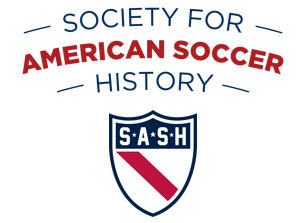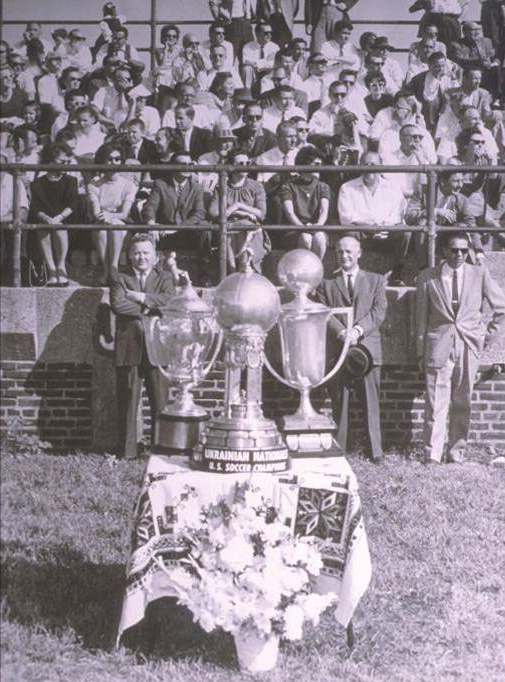
Before the arrival of the U.S. Open Cup final in Philadelphia last year, there was a lot of attention lavished on the visitors, Seattle Sounders F.C.
To be fair, the attention was well-deserved: this was Seattle’s fifth visit to the finals in six years of competing as a Division 1 side, with three consecutive wins from 2009 to 2011. This is a level of consistency that has not been seen since the likes of Bethlehem Steel (finals appearances in five straight seasons, winning four, 1915-19) and the incredible run of the Stix, Baer & Fuller/Central Breweries/St. Louis Shamrocks from 1932-37, with three wins in six years.
Because of the (for some, rather forced) connection between the Philadelphia Union and Bethlehem Steel, we have heard of the Steelmen mentioned in the same breath as Seattle as an example of a great U.S. Open Cup dynasty. However, a team much closer to home came to personify the Open Cup in the 1960s, forging a dynasty of its own that deserves to be better remembered. Stated simply: from 1960 to 1966, the Philadelphia Ukrainian Nationals were known as the best team in the U.S., not just for its success in the American Soccer League, but also for its dominance in the country’s de facto national soccer championship.
Beginnings
The club rather stumbled at the outset. Initially, a club known as the Philadelphia Ukrainians joined the ASL for the 1957-58 season, only to be suspended after winning its opening match in late October. The franchise was replaced with the Ukrainian Nationals on October 22, 1957, and that side managed to finish as the runner-up in the league table, as well as losing in the Lewis (league) Cup final. The next season found the Ukes adding their first piece of hardware, winning the Lewis Cup while again finishing in second in the league. Thus, the young club ended the Eisenhower Era as a team to be watched.
The first year of the new decade did not disappoint. As the ASL retired the Lewis Cup, the Ukes focused on the other domestic Cup competition, the Open Cup. Storming to the finals, the Ukes defeated Los Angeles Kickers, 5-2, after a stunning 5 goal performance from Mike Noha. While the Ukrainian Nationals again finished second in the ASL, the team managed to produce the circuit’s leading scorer (Noha), MVP (Andy Racz), and Coach of the Year (Walter Medusha). Adding to the laurels was a resolution by Philadelphia City Council congratulating the team.
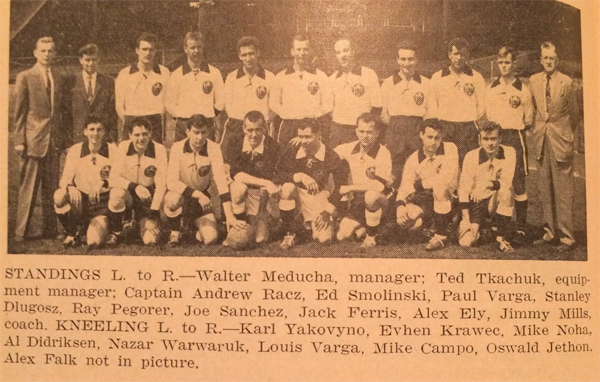
The winning continues
The 1961 season found the Ukes further establishing their credentials as the best club in the U.S. as the team took home its first double — cruising to the ASL title, eight points clear (with a game in hand), the Ukrainian Nationals again defeated a west coast side (this time the Los Angeles Scots) to win the Open Cup, prevailing in a two-leg final by a 7-4 aggregate. Herman Niss led the ASL in scoring with 17 goals, and netted two goals in the decisive second leg of the Cup at McCarthy Stadium in Philadelphia. However, notwithstanding its glaringly ethnic nickname, the Philadelphia club also demonstrated its willingness take talented players from all places, as the lineup featured 10-goal scorer Roberto Mangini.
The Ukrainian-Nationals again won the ASL crown in 1962, but were upset by New York Hungaria in the semifinals of the Open Cup, losing both legs by a 2-1 margin. However, the team would soon recover.
The 1963 season found the Ukrainian Nationals logging one of the most dominant seasons in U.S. soccer history. Led by top scorers Ismael Ferreyra (14 goals), Mike Noha (13 goals) and Walt Czychowich (11 goals), the Ukes went 10-1-3 in league play, good for 21 points, and won the regular season crown. The club added to its trophy case by winning the Lewis Cup, brought back for one last time (as a result, this trophy—dating back to the 1920s—bounced around in the hands of the club for years, and now resides in a museum in Ukraine for some reason).
The Ukrainian Nationals were not through, however. After a one-year absence, the team again proceeded to the U.S. Open Cup final. Before 5,000 at Cambria Field in Philadelphia, 1960 Cup hero Mike Noha finally scored in the 102 minute to give the home side a 1-0 win over Armenia SC of California. With the win, the Ukes had won the treble, the last time this has happened, and only the second time overall (along with Brookhattan of New York in 1945 with their win of the ASL title, the Lewis Cup, and the US Open Cup).
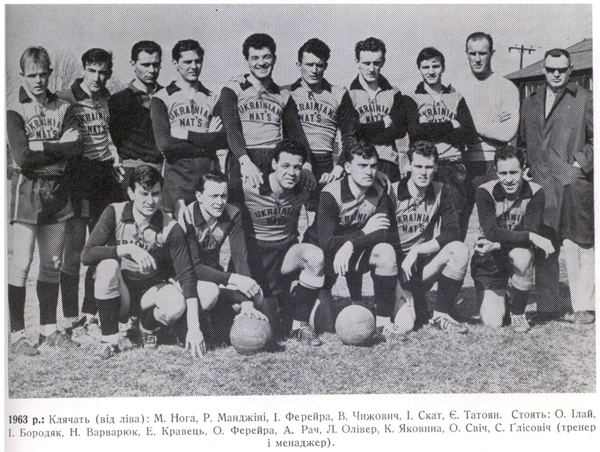
The following 1964 season found the Ukes continuing their ASL dominance, winning the league crown and providing the league its leading scorer (Czychowich). With no Lewis Cup to defend, the club could again focus on the Open Cup, and advanced to the final for the fourth time in five years for a rematch of the 1960 final. This time, however, there were no heroics from Mike Noha — Czychowich’s two goals in the first leg were the only two the team would score in a 2-2 draw in Philadelphia, and the team crashed hard in a 2-0 loss at Wrigley Field in the second leg.
Eastern Professional Soccer Conference
By this time, “big time” soccer was starting to make some inroads in the U.S. — the International Soccer League, a summer tournament of imported clubs, had drawn large crowds since its advent in 1960, and domestic clubs wanted a piece of the action. As a result, the ASL formed a “super league” with the New York German-American League to form the Eastern Professional Soccer Conference. As a four-time defending champion, the Ukrainian Nationals were naturally part of the new league. After a mid-table finish in the Southern Conference, and with the league itself never generating much enthusiasm, the Philadelphia club returned to the ASL the next season. For only the second time in the decade, the Ukes also failed to reach the US Open Cup final, losing to New York Ukrainian in the semifinal by a 4-3 aggregate over two games.
The Ukes could only manage a third place finish in the ASL in 1966, although George Benitez at least managed to place second in the league scoring table with 21 goals. However, the team returned to the U.S. Open Cup final for the fifth (and final) time in seven years, winning its fourth title of the decade with a 1-0, 3-0 two-leg final victory. Again showing an international flavor that belied its ethnic name, the goals were scored by Benitez, Carlos Yacovino, and Henry Wagner.
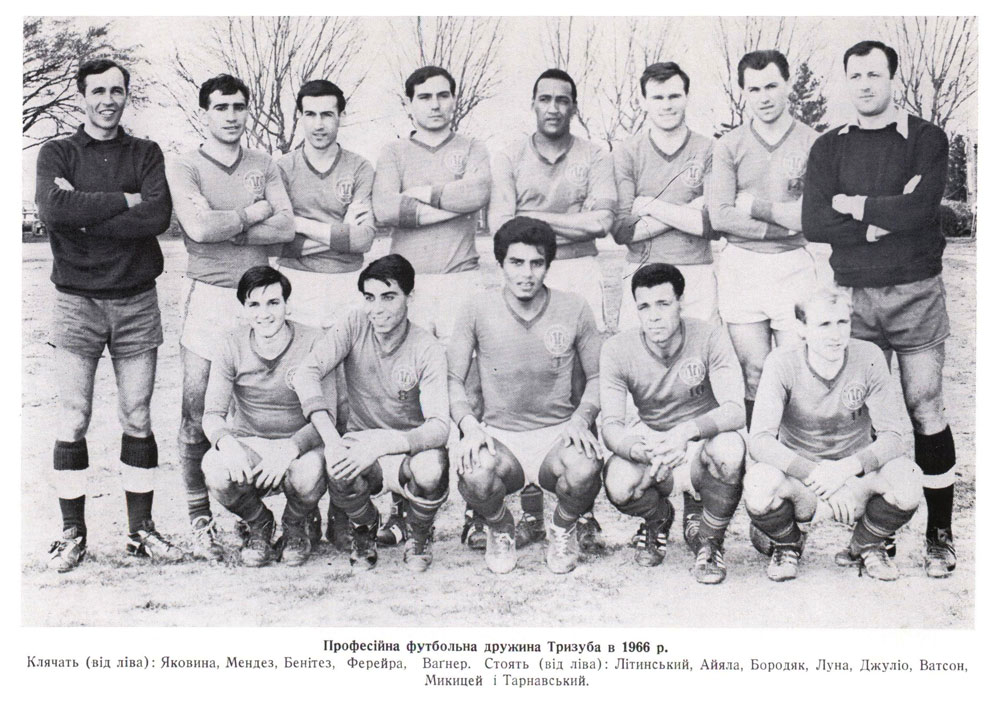
The close of the ASL years
With the arrival of true “major league” soccer in 1967, the ethnic clubs that had carried the ASL for decades quickly lost relevance. The Ukrainian Nationals managed a second-place finish in the ASL’s Northern Division that year, with Benitez again the league’s leading scorer. As far as the Open Cup, the club managed to get to the quarterfinals, but succumbed to Patterson (NJ) Roma, 2-0.
More interestingly, the club participated in the CONCACAF Champions league in 1967, losing to Alianza of El Salvador in the semifinals by 3-1 aggregate (with both matches played in El Salvador).
A lion in winter at this point, with many of its best players grabbed by the North American Soccer League, the Ukrainian Nationals managed one more ASL title in 1967-68, winning the First Division and then prevailing over New York Inter FC in the playoffs. Sporting a distinctly Latin flair at this point, the Ukes were paced by league leading scorer Ivan Paleto (17 goals) and Luis Passache (9 goals). The team participated in the US Open Cup one last time, advancing to the semifinals before losing to eventual champion New York Greek Americans.
When the ASL switched to a summer schedule in 1968, the newly-christened Philadelphia Ukrainians (the original name of the club booted from the league in 1957) participated and managed a third place finish. Philadelphia participated in two final ASL seasons (1969 and 1970)—winning the 1970 title for its sixth league crown in eleven seasons.
By this time, however, the club could no longer compete at the professional level and maintain economic viability. In 1971, it joined the amateur German American League, and faded into obscurity by 1976.
Legacy
Why is Philadelphia Ukrainian Nationals not better remembered? Frankly, the club’s name — a painful reminder of soccer’s distinctly minor league/“social club” status for the better part of the 1950s and 1960s — must take much of the blame. Still, that is a pity. In its relatively short (13 seasons) run, the Ukrainian Nationals managed:
- six American Soccer League titles
- four U.S. Open Cup titles
- five U.S. Open Cup finals appearances
- three Open Cup semifinals appearances
- one Open Cup quarterfinal appearance
- two Lewis Cup titles
- a treble in 1963
This is an incredible level of consistent success. Indeed, at the time it was recognized by the powers-that-be: the Ukes had home games televised for the local market, and in 1966 there was talk of a soccer-specific stadium being built for the team by the City’s Fairmount Park Commission.
Bethlehem Steel? Seattle Sounders? Pikers—it is time to remember the Ukrainian Nationals.
A version of this article first appeared at the Philly Soccer Page on September 12, 2014
